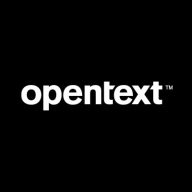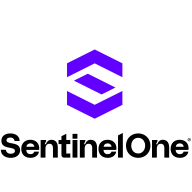

SentinelOne Singularity Complete and OpenText Core Endpoint Protection both compete in the endpoint security solutions category. SentinelOne appears to have the upper hand due to its advanced feature set, especially in rollback functionality.
Features: SentinelOne Singularity Complete offers superior rollback functionality, deep visibility, automated remediation, and AI-driven threat detection. OpenText Core Endpoint Protection is recognized for its lightweight agent and easy deployment.
Room for Improvement: SentinelOne users seek better reporting capabilities, more comprehensive documentation, improved integrations, and a more user-friendly interface. OpenText could enhance its ransomware and phishing protection, and provide more detailed threat intelligence.
Ease of Deployment and Customer Service: SentinelOne supports diverse environments like Hybrid and Public Clouds with highly praised customer service for its responsiveness and proactive support. OpenText is noted for fast deployment, especially in cloud setups, but lacks deployment flexibility compared to SentinelOne.
Pricing and ROI: SentinelOne, priced at a premium, justifies its cost through advanced features, reduced incident response times, and strong ROI. OpenText is seen as cost-effective, providing solid protection at a lower price point for budget-conscious organizations.
| Product | Market Share (%) |
|---|---|
| SentinelOne Singularity Complete | 4.3% |
| OpenText Core Endpoint Protection | 1.1% |
| Other | 94.6% |

| Company Size | Count |
|---|---|
| Small Business | 35 |
| Midsize Enterprise | 2 |
| Large Enterprise | 2 |
| Company Size | Count |
|---|---|
| Small Business | 87 |
| Midsize Enterprise | 44 |
| Large Enterprise | 77 |
OpenText Core Endpoint Protection offers cloud-managed endpoint security with AI integration, providing real-time protection and lightweight performance. It ensures low system impact, seamless cloud integration, and cost-effective security solutions for various devices.
OpenText Core Endpoint Protection is a comprehensive endpoint security platform utilized by managed-service providers for antivirus and firewall functionality across servers, workstations, and mobile devices. It employs AI for robust threat detection, integrating with cloud applications for real-time updates. Multi-layered security features include malware protection, network defense, and DNS protection. Although connectivity and threat reporting need improvement, this platform extensively supports remote device management and integrates efficiently with Active Directory policies.
What are the key features of OpenText Core Endpoint Protection?OpenText Core Endpoint Protection finds application in industries requiring stringent data protection and peace of mind over device security. Managed-service providers implement this for comprehensive antivirus and firewall features, safeguarding multi-device networks. It is particularly useful for DNS protection and integrating with Active Directory policies, enabling secure yet flexible operations across sectors.
SentinelOne Singularity Complete delivers advanced endpoint protection leveraging AI-driven threat detection and behavior analysis for efficient malware and ransomware response. Its standout features enhance security insights and ensure comprehensive endpoint management.
SentinelOne Singularity Complete provides robust ransomware recovery through unique rollback capabilities and seamless integration with various security solutions. Its machine learning enhances endpoint protection, minimizing false positives and automating responses. While praised for real-time threat monitoring, incident management, and asset management, it faces challenges in managing the console, customizing UI, and maintaining policy flexibility. Some users report difficulties with deployment and integration with existing systems, and enhanced reporting, alert management, and documentation are desired. Its appeal extends to deploying across multiple operating systems, offering comprehensive security coverage and facilitating cybersecurity compliance.
What standout features does SentinelOne Singularity Complete offer?Industries implement SentinelOne Singularity Complete for its AI capabilities in advanced endpoint protection, particularly against malware and ransomware. It's utilized across diverse operating systems, aiding in real-time threat monitoring and facilitating compliance. Organizations use it for vulnerability assessments and asset management, ensuring optimal protection in complex IT environments.
We monitor all Endpoint Protection Platform (EPP) reviews to prevent fraudulent reviews and keep review quality high. We do not post reviews by company employees or direct competitors. We validate each review for authenticity via cross-reference with LinkedIn, and personal follow-up with the reviewer when necessary.